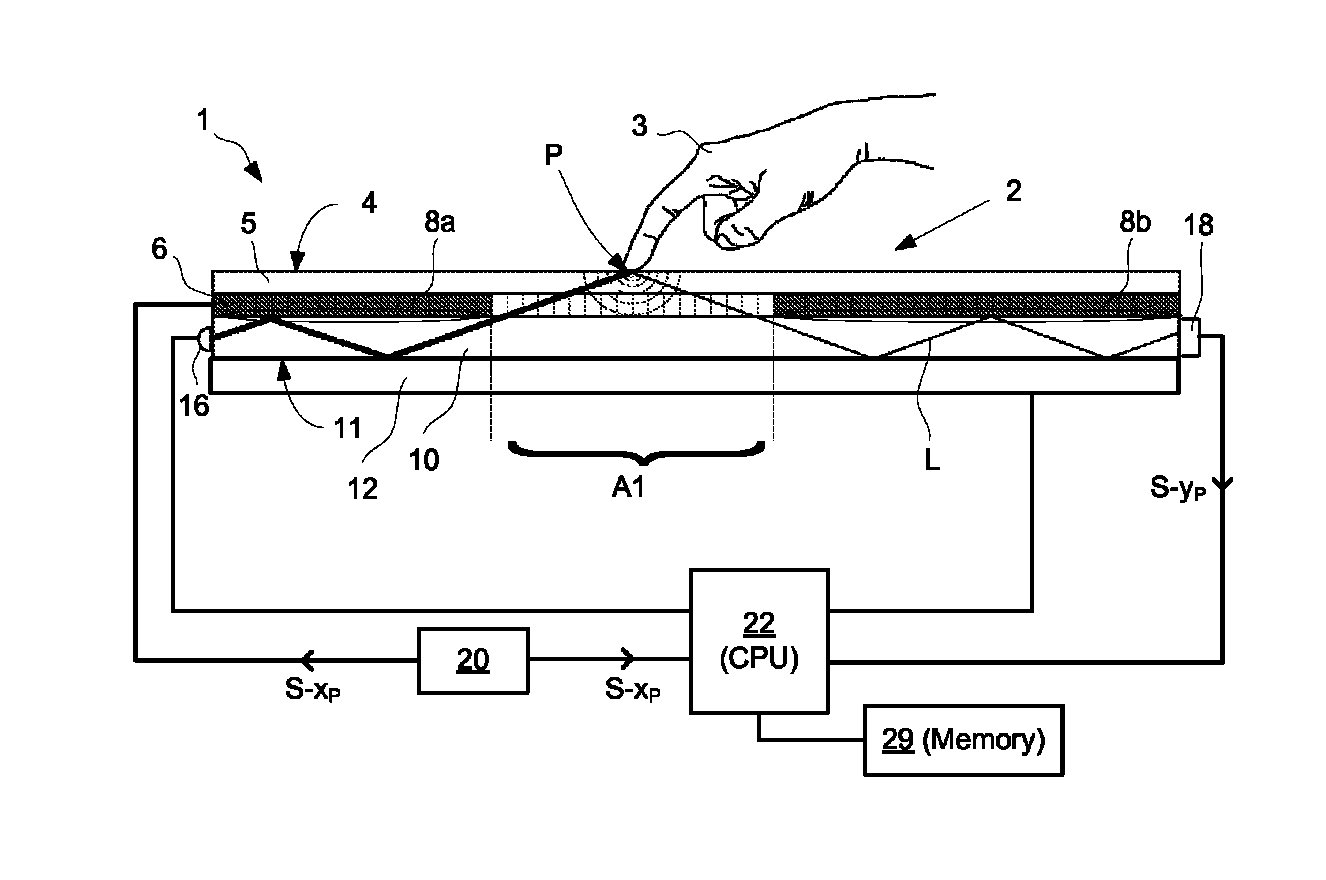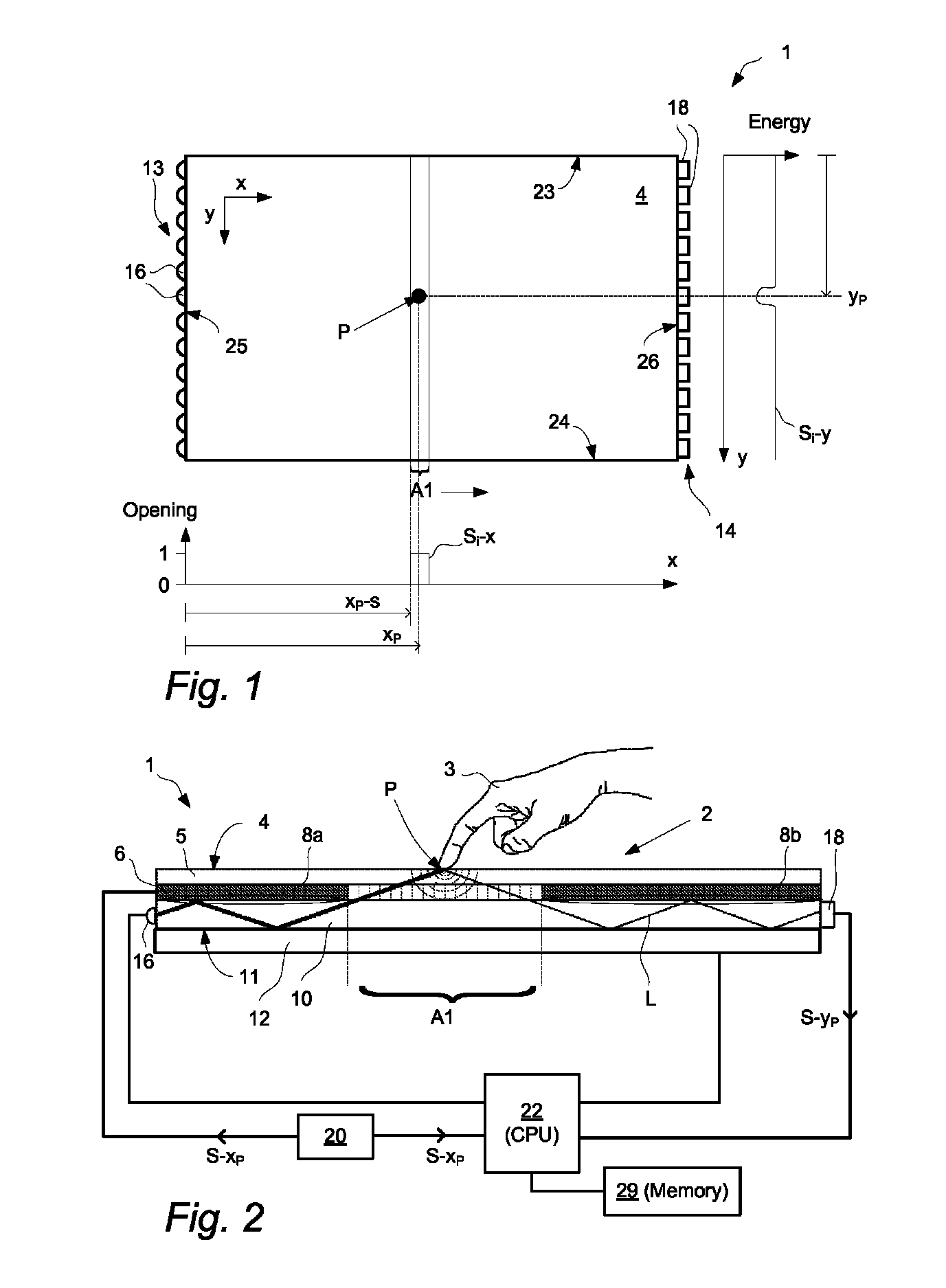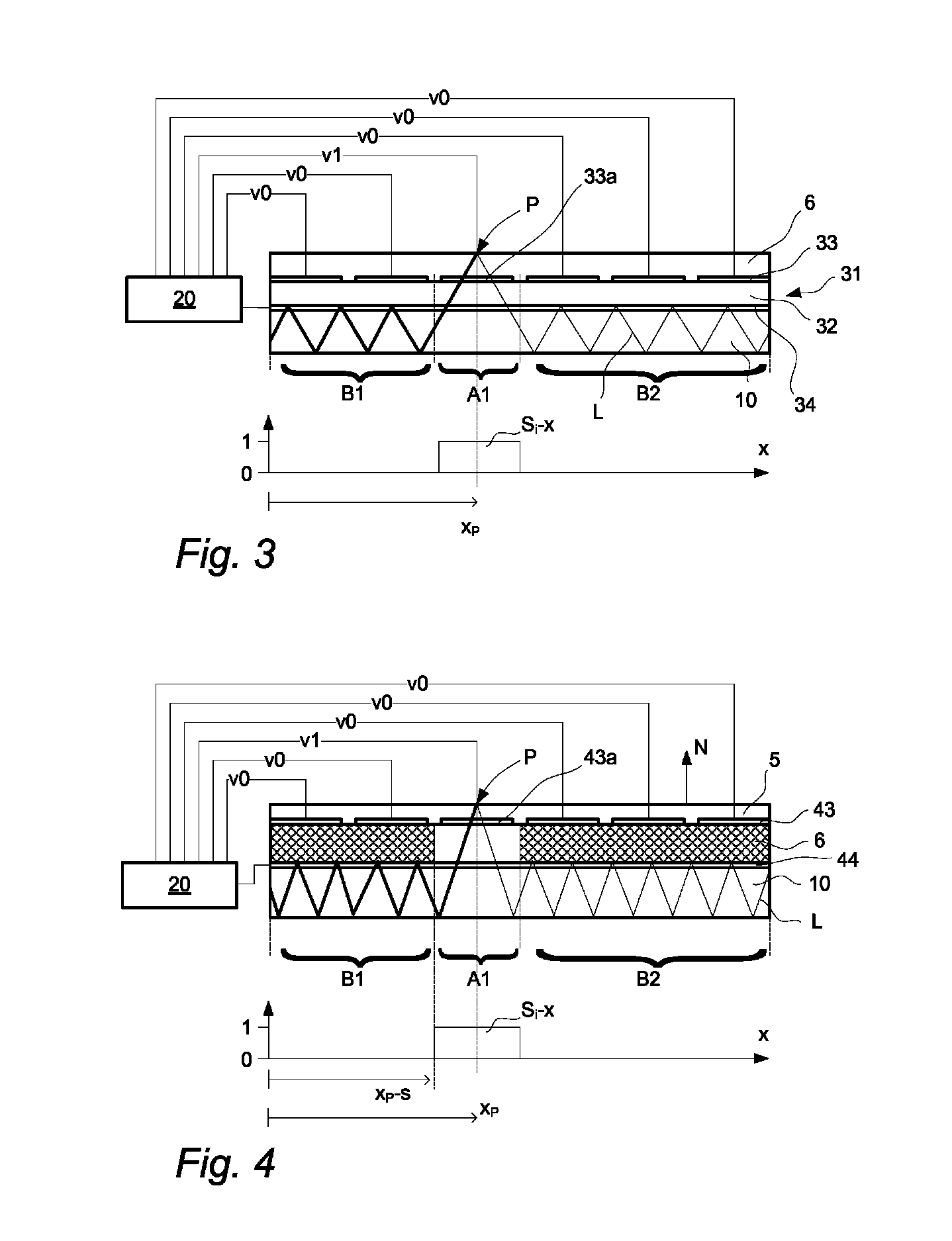Touch surface with variable refractive index
a technology of refractive index and touch surface, which is applied in the field of touch surface with variable refractive index, can solve the problems of increasing the not easily scalable, and high cost of the above-mentioned ftir technique, so as to achieve the effect of low number of light emitters and/or detectors
- Summary
- Abstract
- Description
- Claims
- Application Information
AI Technical Summary
Benefits of technology
Problems solved by technology
Method used
Image
Examples
Embodiment Construction
[0044]With reference to FIG. 1 and FIG. 2, an embodiment of touch-sensing apparatus 1 for determining a location P of an object 3 that touches a touch surface 4 is illustrated. The touch-sensing apparatus 1 comprises a light-transmissive panel 2 with an upper surface that defines the touch surface 4. More specifically, the panel 2 may be planar or curved and has an upper touch layer 5 defining the touch surface 4, a first layer 6 arranged underneath the touch layer 5, and a second layer 10 arranged underneath the first layer 6 and at its lower side defining an opposite surface 11 generally parallel with the touch surface 4.
[0045]In FIG. 1, a Cartesian coordinate system has been introduced, with the x-axis being parallel to a first side 23 and to a second side 24 of the panel 2 while the y-axis is parallel to a third side 25 and to a fourth side 26 of the panel 2. The exemplified panel 2 has a rectangular shape but may just as well be e.g. circular, elliptical or triangular, and anot...
PUM
 Login to View More
Login to View More Abstract
Description
Claims
Application Information
 Login to View More
Login to View More - R&D
- Intellectual Property
- Life Sciences
- Materials
- Tech Scout
- Unparalleled Data Quality
- Higher Quality Content
- 60% Fewer Hallucinations
Browse by: Latest US Patents, China's latest patents, Technical Efficacy Thesaurus, Application Domain, Technology Topic, Popular Technical Reports.
© 2025 PatSnap. All rights reserved.Legal|Privacy policy|Modern Slavery Act Transparency Statement|Sitemap|About US| Contact US: help@patsnap.com



